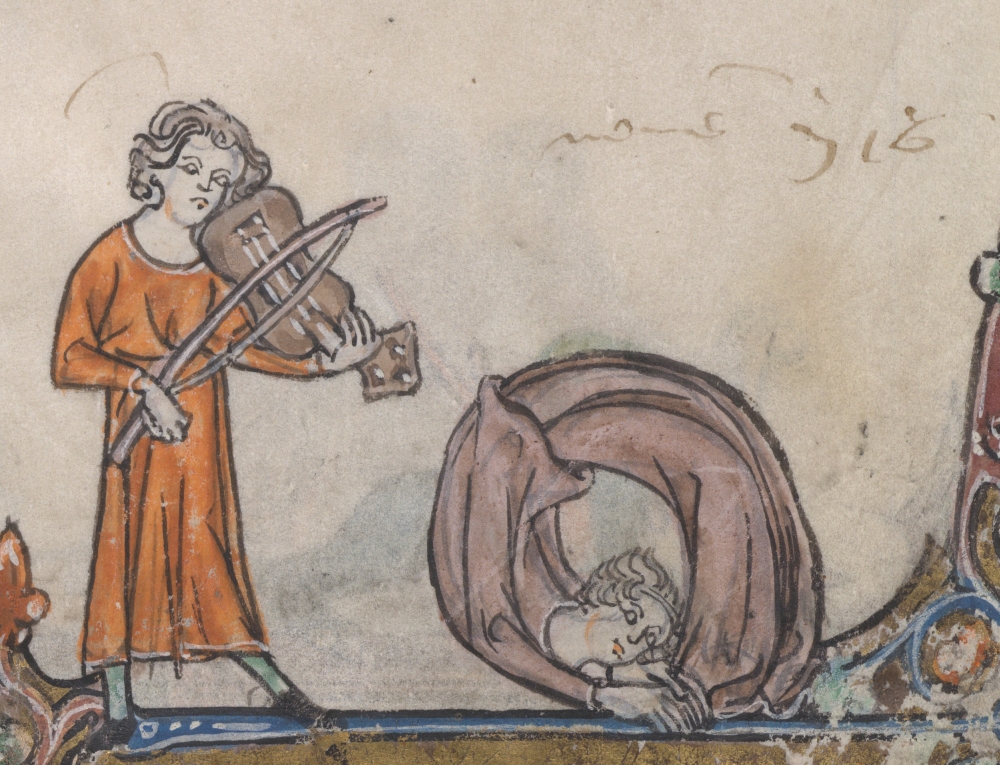What happens in this picture ?!
This exceptionally lithe woman is called Salome. She was the step-daughter of the Roman King Herod Antipas. The picture shows her dancing to the music of a violin, or actually an early version of what we now call a violin. The position that Salome is shown in, bent completely backwards, was the standard position for depicting dancers and acrobats in Mediaeval paintings.
What happens in this picture ?!
This exceptionally lithe woman is called Salome. She was the step-daughter of the Roman King Herod Antipas. The picture shows her dancing to the music of a violin, or actually an early version of what we now call a violin. The position that Salome is shown in, bent completely backwards, was the standard position for depicting dancers and acrobats in Mediaeval paintings.
swirl
🪓
You might think you're looking at a happy, joyful scene, but nothing could be further from the truth. Salome's step-father, Herod, was so enchanted by her dance moves that he said he would do anything that she wanted. And Salome's mother wanted to get back at one of her enemies. She quietly told her daughter to ask Herod for the head of John the Baptist. Herod couldn't refuse and so poor John, was beheaded.
Fun fact! We refer to the picture of John’s chopped-off head as 'John in disco'. In Latin, the word 'disco' means 'plate or dish'. The head of John the Baptist was presented to Herod on a plate. It's quite a coincidence though.
📖
Generally speaking, we can't be sure about anything relating to Mediaeval books. But we do know something about the book that contains this picture. We know exactly who wrote it, who it was written for and when it was written. Notes at the back of the book say that the missal was written in 1323 by Garnier de Moreuil. The pictures were painted by Pierre de Raimbaucourt, on the instructions of Jean de Marcheuil, the boss of a French monastery.
